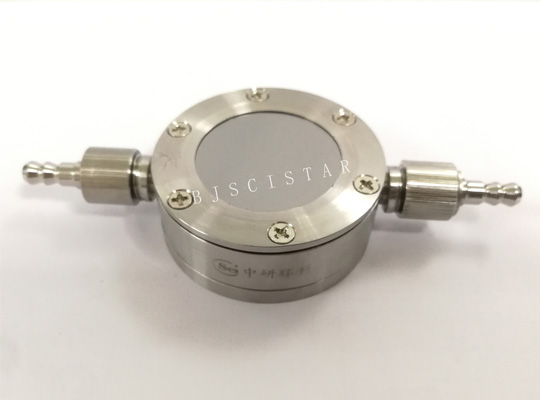Service hotline
+86 18518316054
The LA-XRD cell is one type of in-situ Lithium-air-battery cells for X-ray diffraction characterization. The top of the in-situ cell is designed and installed two high purity Be window (>=99.93%). And one of the Be window is dealt with tens of holes for gas circulation. This Be window is not only used as a current collect with good conductivity, but also as an excellent X-ray penetration window. The in-situ cell can realize the online monitoring and recording of XRD data when the battery is charged and discharged. Real-time and on-line observation of the phase transition in the chemical reaction of lithium-air battery can help researchers reveal their related dynamic mechanisms and achieve chemical properties-structure/composition integration of materials.

Main features
1. The in-situ cell is designed for in-situ X-ray diffraction detection, which is based on the basic principle of lithium-air batteries;
2. During the charging-discharging process, the X-ray diffraction data can be collected online (reflection mode) by this in-situ cell;
3. The in-situ cell has a wide angle for both of the X-ray entrance and diffraction, achieving a large X-ray detection angle: 10 ° <2θ <90 °;
4. The in-situ cell has a small size, which can be adapted to match a variety of different X-ray diffractometers;
5. The in-situ cell has a well internal pressure environment, which is applied to the electrode with good adjustable and uniformity;
6. The in-situ cell is equipped with two gas junctions on the main part to facilitate the control of the atmosphere during the experiment;
7. According to user needs, the gas junctions can be shut down or opened at any time for both of inlet and outlet sides;
8. Fluorine gaskets are used to seal all the cell, making sure the overall system sealing;
9. In the assembly process, the electrode materials and electrolyte can be easily assembled; meanwhile, all components can also be easily disassembled and cleaned.
10. The in-situ cell can be reused.
Optional accessories: high purity beryllium window (>= 99.93%); Kapton membrane; and Al foil.
Patent number:ZL2018 2 0286312.7